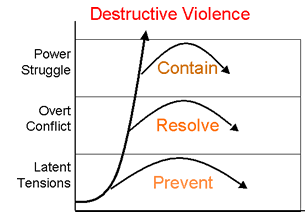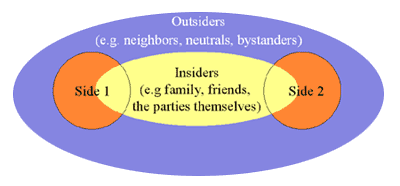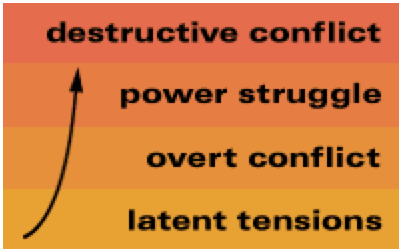The Third Side: Collaborating to Deal with an Escalating School Problem
Eleven-year-old James had bullied his classmate Mark for a long time, ragging him over his poor English and foreign origins.
In chemistry class one day, James spilled a test-tube full of water on Mark’s head; Mark retaliated with a test-tube full of water mixed with chemicals. The dispute threatened to escalate.
When conflict breaks out, the ten roles work in reverse sequence, beginning with containment and looping back to resolution and prevention. In this case, the teacher, acting first as Witness and then as Peacekeeper, intervened to stop the fight. He emphasized to the whole class the potential dangers and, serving as Referee, forbade them to play or fight with chemicals.
From containment, the focus turned back to resolution. The next day, the teacher and the school principal held separate meetings with both Mark and James, each with their respective parents. They asked about what had caused the fight in the first place. After Mark told them about James’s bullying behavior, they – as Referees – explained to James that it had to stop. Later, the teacher – as Mediator and Healer – convened a meeting with both boys to help them resolve their differences. The boys apologized to one another and promised not to fight anymore. In order to send a strong message to the community about the importance of not fighting in chemistry class, the principal, as Arbiter, suspended both boys for a day.
Prevention then became key. The school counselor spent time with each boy. She sought to understand from James why he had bullied Mark, and brainstormed with him other ways to get respect and feel powerful, acting as Provider. She then role-played with Mark effective techniques to handle his emotions when provoked. Each boy’s parents also served as Teacher to both boys.




